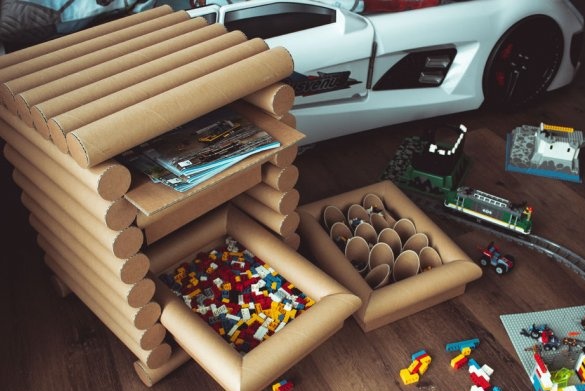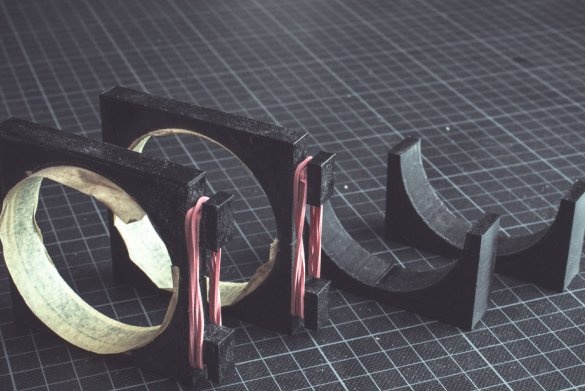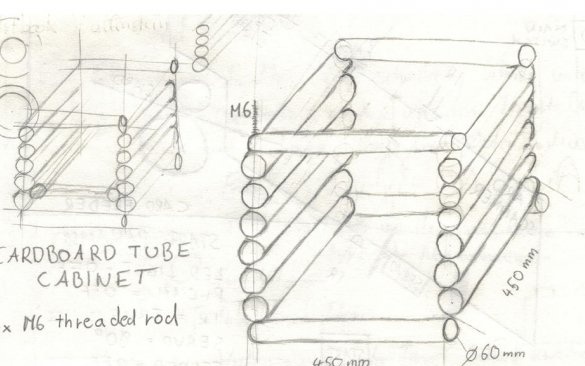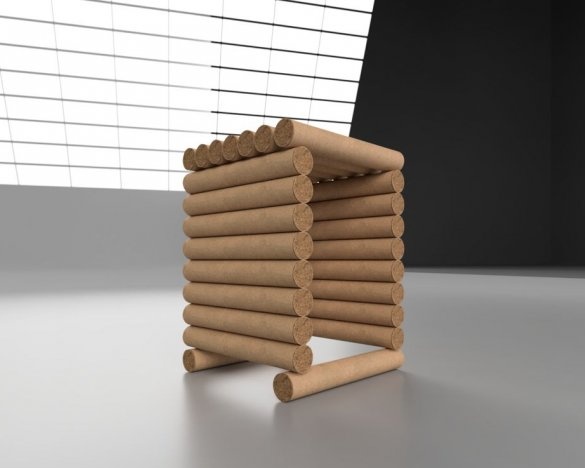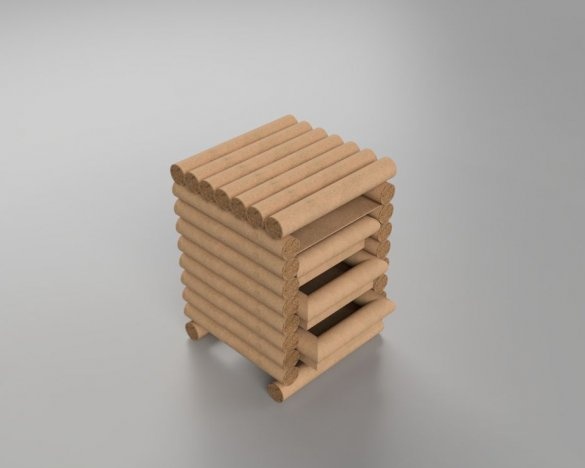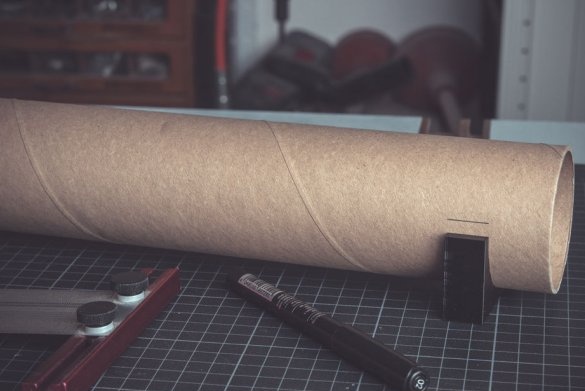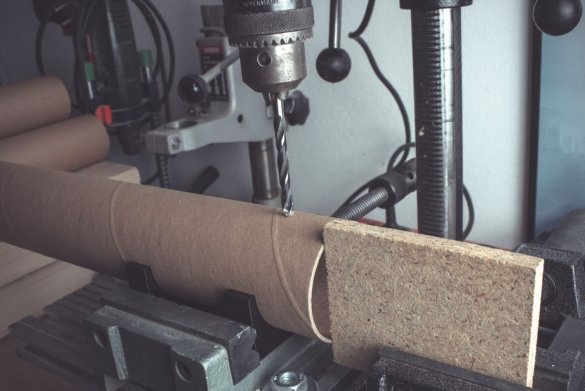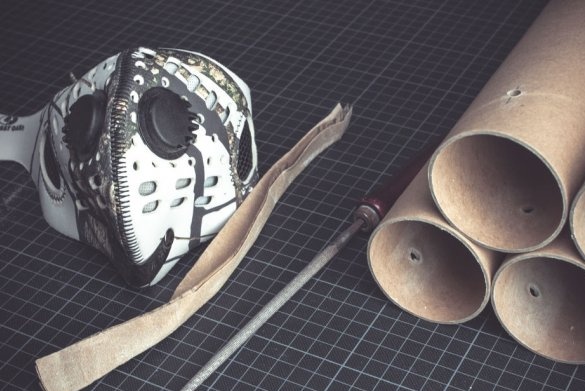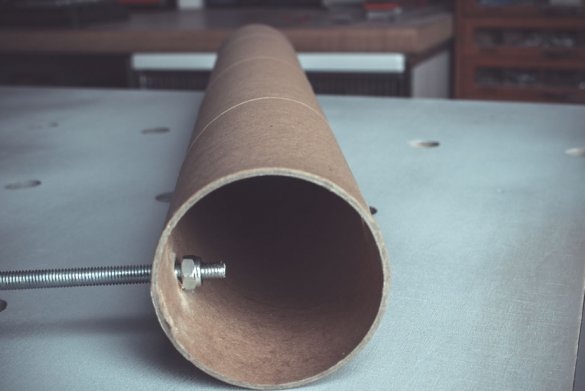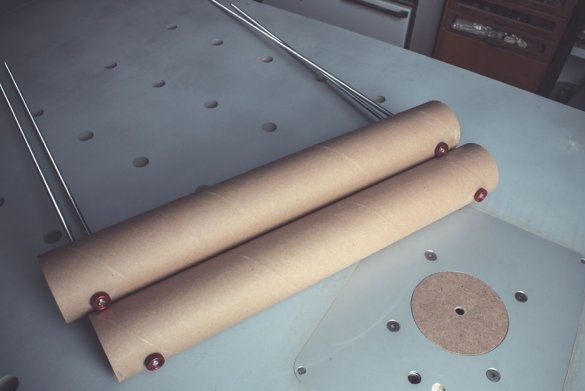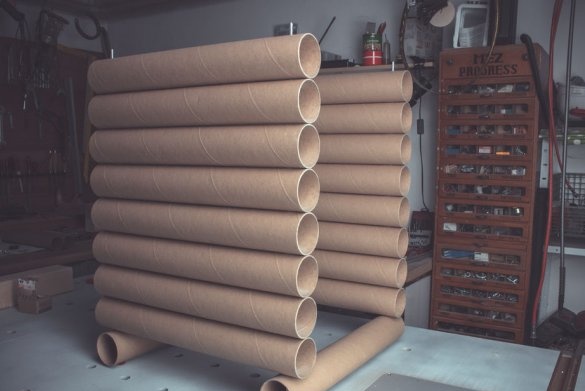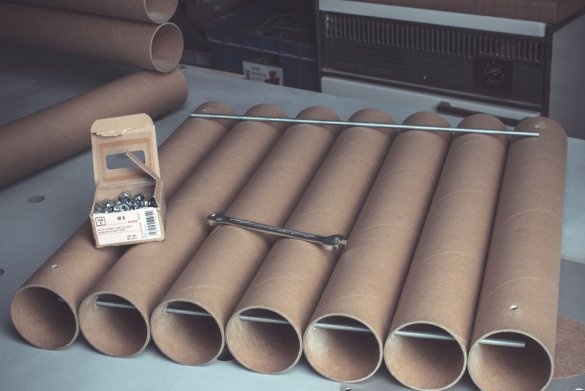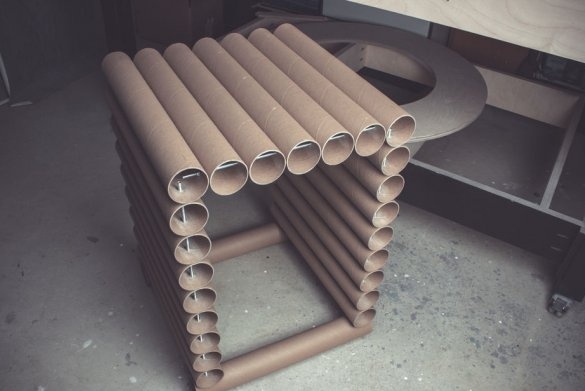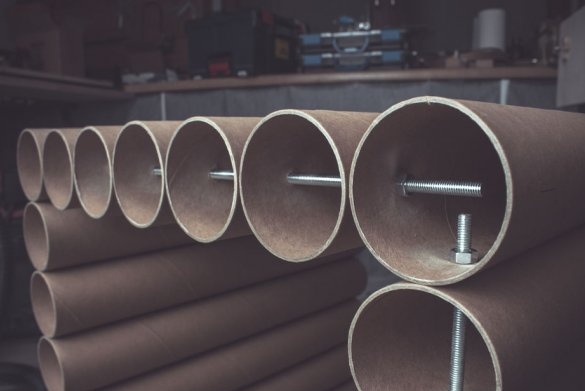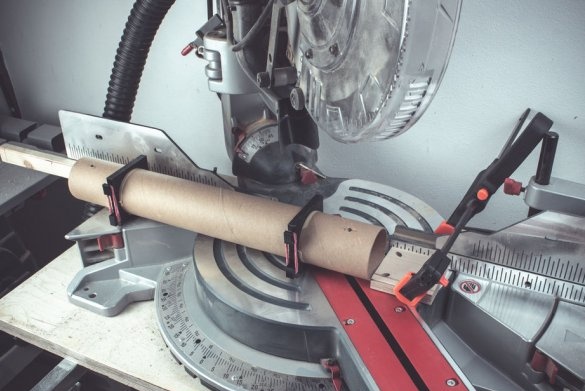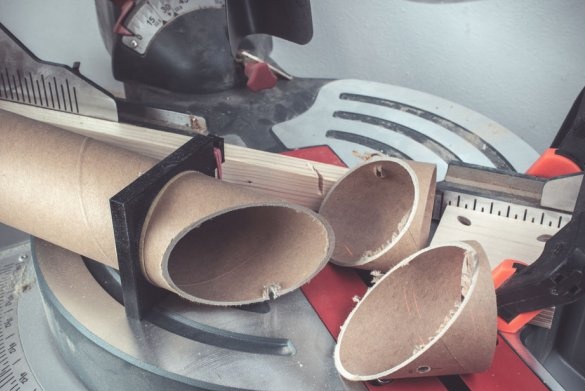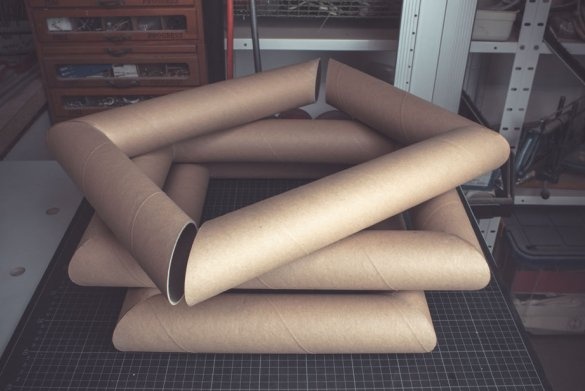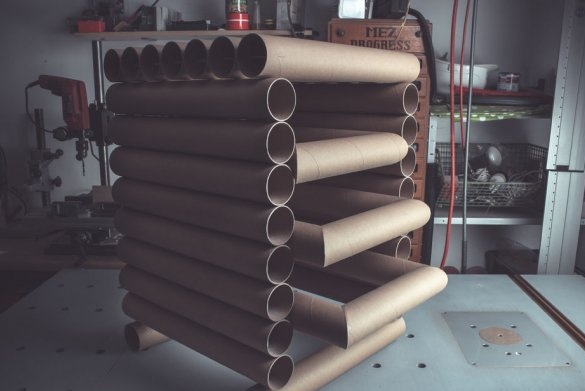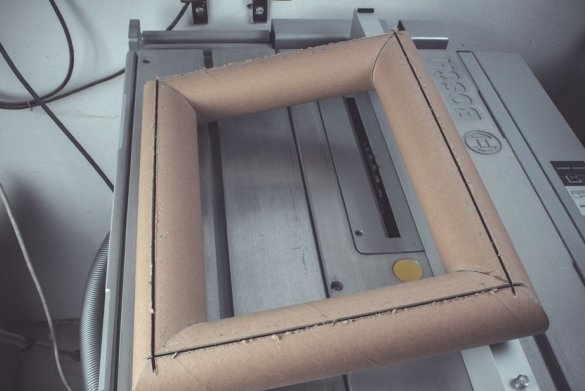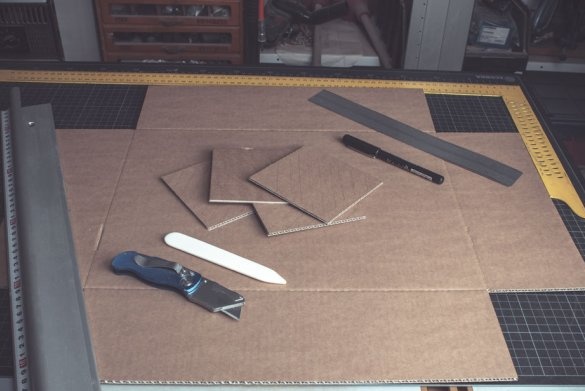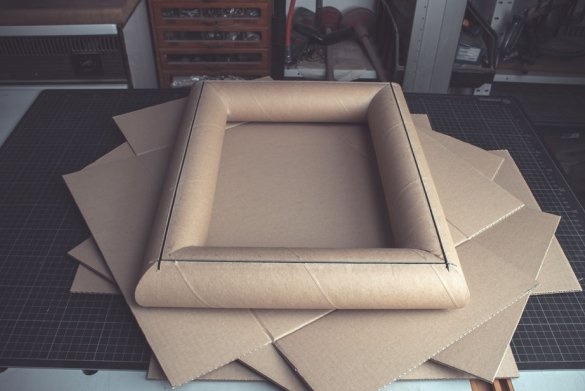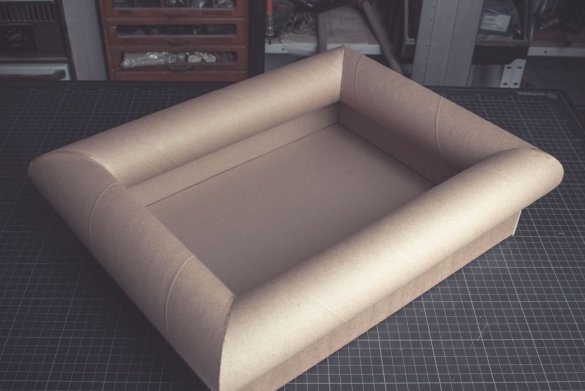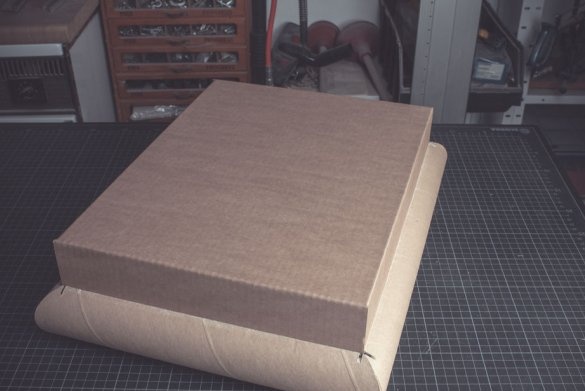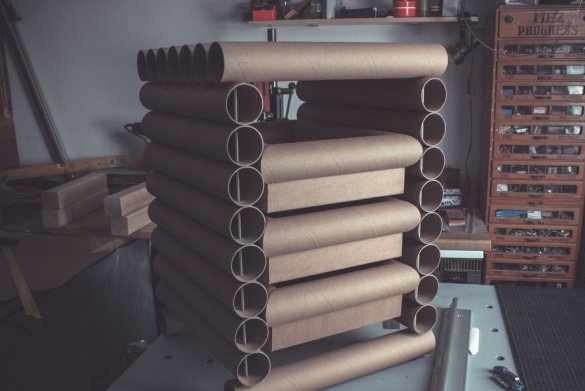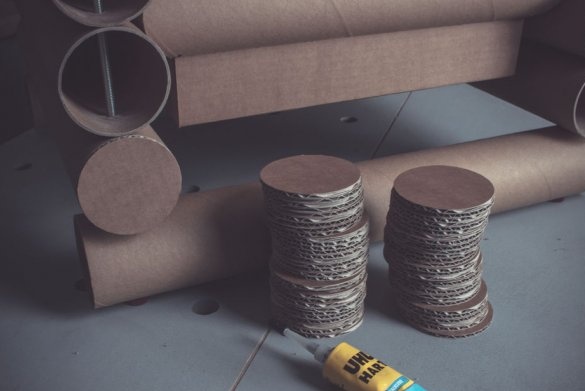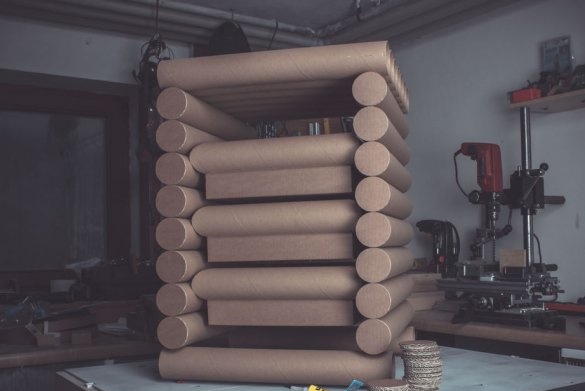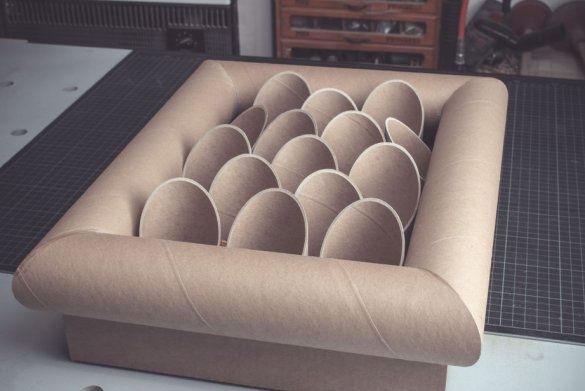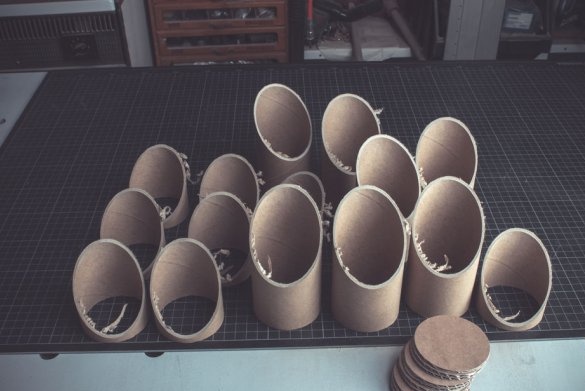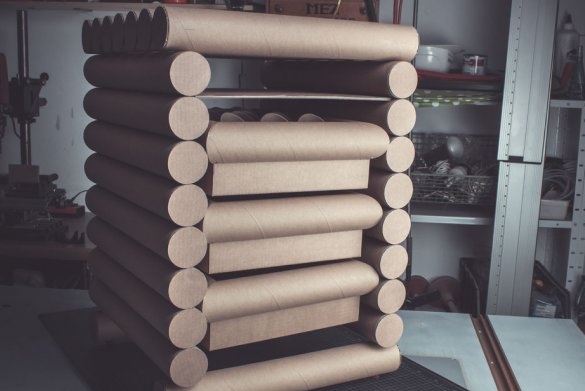The author of Instructables, under the nickname theguymasamato, has found use for durable cardboard tubes left over from rolls of paper for large format printing. He built from them a chest of drawers for storing Lego parts, which is more convenient than one huge box where they are mixed.
To make it easier to process the tubes, he printed two types of devices:
- for sawing:

A - for drilling:
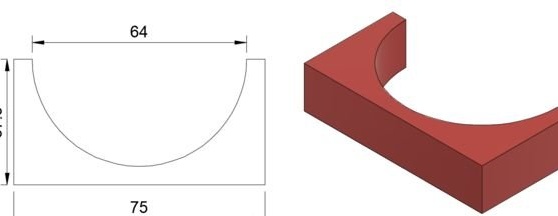
The master makes a sketch homemade:
Then her three-dimensional model:
Great, now with the drawers:
But how to connect the tubes to each other? A glue gun is a good thing, but not in this case. He will connect two flat surfaces forever, but not the tube with the tube. Need a different solution. Studs - here is the answer:
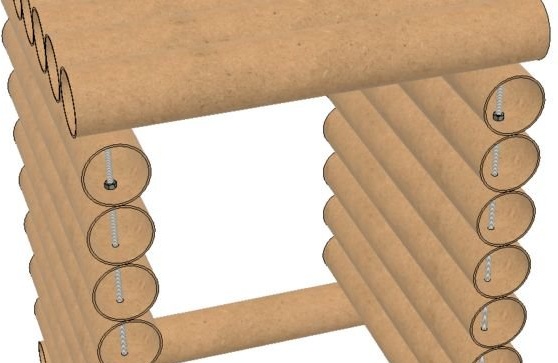
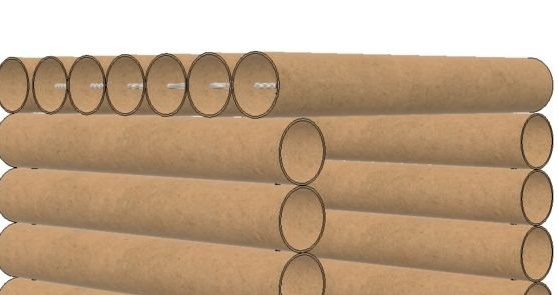
The caps for the tubes will be flat cardboard mugs:

And the boxes will combine both tubular and flat parts:
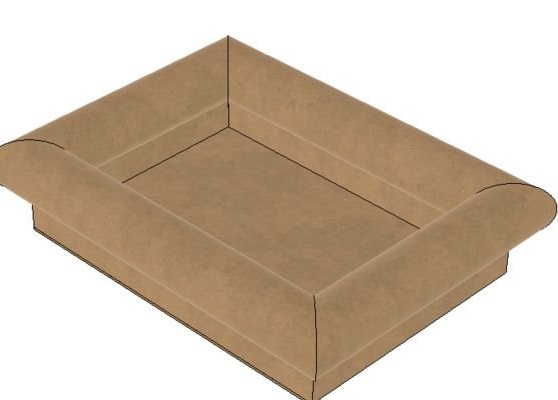
No special drawer guides, as in large chests of drawers, are required here. The tubes of the boxes will move strictly horizontally between the tubes of the housing. A flat shelf will fit above the top drawer:
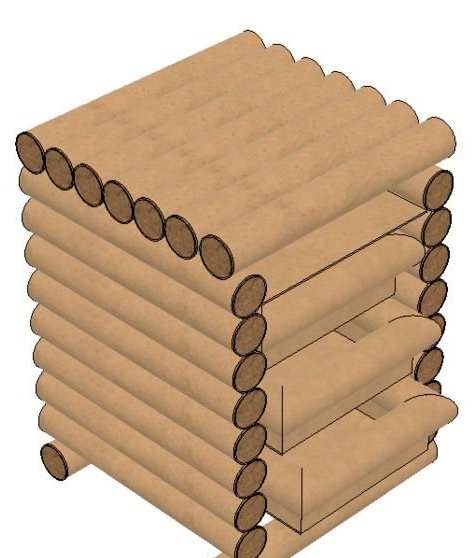
For drilling, theguymasamato puts the pipe on the above fixtures:
Layouts as shown in the image:
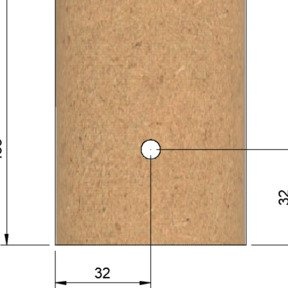
She presses the plate so that the holes are always obtained in the same places, and drills one tube after another:
Grinds in a respirator, but it is not clear why. I mean, not "why a respirator", but "why grind it." The tubes are already smooth.
Starts to collect:
Continues:
Separately collects the upper part:
Installs:
Shows near:
And he understands that the upper part must be rotated 90 degrees (see sketches above). Well, okay, this is not for long.
It is convenient to use rubber rings used in plumbing as washers located between the tubes:
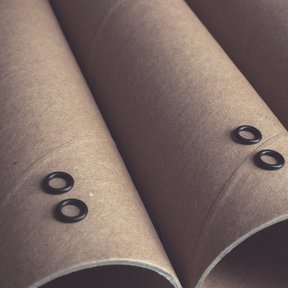
To make the boxes, you need to cut the tubes at an angle of 45 degrees. To do this, fix them as shown below:
Here is the result:
And so you can dock them at an angle of 90 degrees after sawing:
It turns out rectangular frames of drawers:
The master tries on them to the case, which, by the way, now the upper part is installed correctly:
For gluing tubes into rectangles, the developer recommends glue like UHU Hart, other similar characteristics will do.
Now he makes slots in the rectangles for the actual boxes made of their flat cardboard:
He makes a blank for one box, on top of it are the squares remaining after cutting them from the corners:
Similarly, it makes blanks for the remaining boxes:
Bends the workpiece, glues it into the slots of the square from the tubes - the box is ready:
This is it, just turned upside down:
All drawers are made and placed in a chest of drawers:
The holes in the tubes are sealed with circles:
From the waste left after sawing the tubes at an angle of 45 degrees, a cash register was made for storing Lego parts by type:
Each cash register container is removable, the bottom is glued to it from the bottom:
And completes the design of the shelf located above the top drawer. It can store, for example, albums attached to Lego sets.
A similar chest of drawers can be used to store parts of other designers, electronic components, hardware, small tools, etc.

